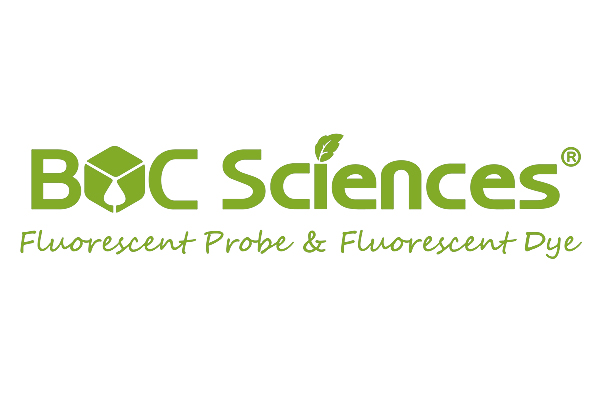
6-NBDG | CAS 108708-22-1
| Catalog Number | A16-0030 |
| Category | Other Cell Fluorescent Probes |
| Molecular Formula | C12H14N4O8 |
| Molecular Weight | 342.3 |
* Please be kindly noted products are not for therapeutic use. We do not sell to patients.
Product Introduction
A fluorescent glucose analog for monitoring glucose uptake in live cells. Provides bright green emission for metabolism and transporter studies-buy online.
Chemical Information
Product Specification
Application
| Synonyms | 6-NBD-Glucose; 6-deoxy-6-[(7-nitro-2,1,3-benzoxadiazol-4-yl)amino]-D-glucose |
| Purity | ≥98% |
| Canonical SMILES | C1=C(C2=NON=C2C(=C1)[N+](=O)[O-])NCC(C(C(C(C=O)O)O)O)O |
| InChI | InChI=1S/C12H14N4O8/c17-9-6(23-12(20)11(19)10(9)18)3-13-4-1-2-5(16(21)22)8-7(4)14-24-15-8/h1-2,6,9-13,17-20H,3H2/t6-,9-,10+,11-,12+/m1/s1 |
| InChIKey | UJAABKCROLDHKO-JPXBYFMYSA-N |
| Appearance | Solid Powder |
| Excitation | 465 nm |
| Emission | 535 nm |
| Storage | Store at -20°C |
6-NBDG (6-(N-(7-nitrobenz-2-oxa-1,3-diazol-4-yl) amino)-6-deoxyglucose) is a non-hydrolyzable fluorescent glucose analog. It is frequently used in biological research to study glucose uptake and transport in living cells without undergoing metabolism. This characteristic makes 6-NBDG an excellent tool for real-time monitoring of glucose dynamics, allowing researchers to explore cellular glucose uptake mechanisms under various physiological and pathological conditions. This dye binds to glucose transporters on the cell membrane, serving as a fluorescent marker that indicates the functional status of these transporters and their activity levels within different cellular environments.
One key application of 6-NBDG is in cancer research. Cancer cells often exhibit elevated glucose uptake, known as the Warburg effect, to support their high metabolic demands. By using 6-NBDG, researchers can visualize and quantify the uptake of glucose in tumor cells, aiding in the understanding of cancer metabolism. This helps in identifying and evaluating potential therapeutic targets that could disrupt glucose uptake, thereby starving cancer cells and inhibiting their growth.
Another significant application of 6-NBDG is in diabetes research. In diabetes, glucose uptake regulation is impaired, leading to elevated blood sugar levels. Researchers utilize 6-NBDG to study how different diabetic conditions or treatments affect glucose transporter activity in insulin-responsive tissues such as muscle and fat cells. This can help in the identification of new drugs or lifestyle modifications that can improve insulin sensitivity and glucose uptake, contributing to better disease management.
6-NBDG is also valuable in neuroscience for studying brain metabolism. Glucose is the primary energy source for the brain, and alterations in its uptake are linked with various neurological disorders. Scientists employ 6-NBDG to monitor changes in glucose uptake in neurons and glial cells, enhancing the understanding of brain energetics during normal function as well as in conditions like Alzheimer’s disease and epilepsy. This provides insights into the metabolic needs of brain cells and potential interventions.
Finally, 6-NBDG is used in cellular physiology studies to investigate glucose transport mechanisms in various cell types. This includes examining how different hormones, cytokines, or pharmacological agents influence glucose transport activity. Researchers can use 6-NBDG to explore signaling pathways that regulate glucose uptake, further elucidating the complex interactions in cellular metabolism. This knowledge is crucial for developing strategies to manipulate glucose uptake in diseases characterized by metabolic dysfunction, such as obesity and metabolic syndrome.
Recommended Services
Recommended Articles

- Hoechst Dyes: Definition, Structure, Mechanism and Applications
- Mastering the Spectrum: A Comprehensive Guide to Cy3 and Cy5 Dyes
- Fluorescent Probes: Definition, Structure, Types and Application
- Fluorescent Dyes: Definition, Mechanism, Types and Application
- Coumarin Dyes: Definition, Structure, Benefits, Synthesis and Uses
- Unlocking the Power of Fluorescence Imaging: A Comprehensive Guide
- Cell Imaging: Definitions, Systems, Protocols, Dyes, and Applications
- Lipid Staining: Definition, Principles, Methods, Dyes, and Uses
- Flow Cytometry: Definition, Principles, Protocols, Dyes, and Uses
- Nucleic Acid Staining: Definition, Principles, Dyes, Procedures, and Uses
Recommended Products
Online Inquiry










![6-[5-(Dimethylamino)-1-naphthylsulfonylamino]hexanoic acid succinimidyl ester](https://resource.bocsci.com/structure/217176-82-4.gif)


